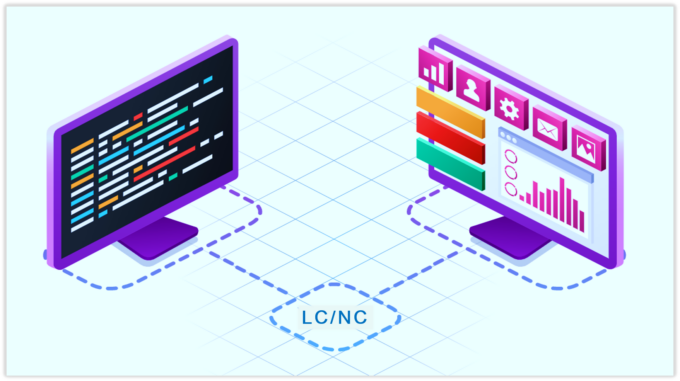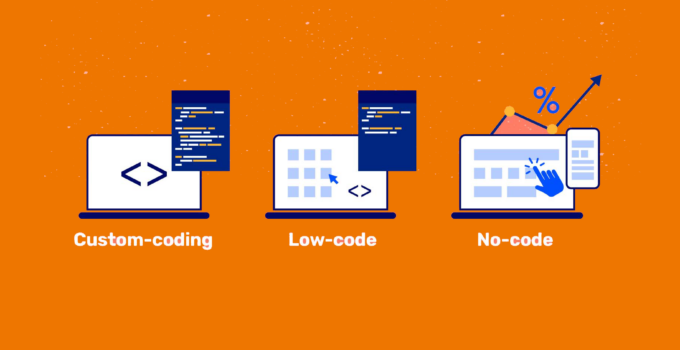If you’re part of a software development company, you know the struggle of choosing the right approach for your projects. No Code, Low Code, or good old Custom coding? It’s a tough decision, but fear not! By the end of this video, you’ll be armed with the knowledge to navigate through the coding wilderness. So, grab your coding glasses, hit that subscribe button, and let’s unravel the mysteries of No Code, Low Code, and Custom coding!
No Code: Painting without Brushes
No Code, my friends, is like painting without brushes. It’s the artistic side of a software development company. You don’t need to be a coding maestro; instead, it’s about using visual elements and pre-built components to craft your masterpiece. Imagine creating an app without even touching a single line of code. Sounds like magic, right?
Pros of No Code: Speed and Accessibility
The beauty of No Code lies in its speed and accessibility. It’s a game-changer for those who’ve never dipped their toes into the coding pool. You can assemble your app like LEGO blocks, making it perfect for prototypes and simple applications. Small businesses and startups can especially benefit from the quick turnaround No Code offers.
Cons of No Code: Limited Customization
But, and there’s always a but, No Code comes with limitations. While it’s fantastic for getting something up and running in no time, it might not be your best bet for complex, highly customized projects. It’s like having a coloring book—sure, you can fill in the spaces, but you’re confined to the outlines.
Low Code: The Goldilocks Zone

Source: nic.in
Now, let’s talk about Low Code. It’s like the Goldilocks of software development—right in the middle, not too hot, not too cold. Low Code platforms provide a visual development environment with pre-built components, giving you more control than No Code but without the full-on coding experience.
Pros of Low Code: Speed with Customization
The biggest pro of Low Code is speed with a dash of customization. You can accelerate your development process by using the pre-built components, and at the same time, tweak things to suit your specific needs. It’s a win-win for projects that need a bit more finesse than what No Code can offer.
Cons of Low Code: The Middle Ground
However, just like Goldilocks had to deal with those three bears, Low Code has its challenges. It might not be the best fit for extremely simple projects, where No Code could get the job done faster, or for highly complex projects that demand the full control of Custom coding. It’s the middle ground, and sometimes that’s exactly what you need.
Custom Coding: The Symphony of Ones and Zeros

Source: devoweb.ca
Ah, Custom coding—the symphony of ones and zeros, where developers wield their keyboards like virtuoso musicians. This is the traditional method, writing code from scratch to create a tailored software solution. It’s like composing a piece of music—every line, every note, carefully crafted for a unique experience.
Pros of Custom Coding: Total Control
The biggest advantage of Custom coding is total control. You’re not bound by the limitations of pre-built components or visual interfaces. You can optimize every line of code for performance, security, and scalability. It’s the go-to choice for large-scale projects that demand a unique solution.
Cons of Custom Coding: Time and Expertise
But, and here’s the catch, Custom coding requires time and expertise. It’s not a quick fix, and you need skilled developers who know their way around the codebase. For smaller projects or tight deadlines, it might not be the most practical choice.
Choosing the Right Path: What’s Best for You?
So, which path is right for you? Well, it depends on your project’s needs. If you’re a startup looking to get your MVP out there quickly, No Code might be your best friend. For projects that need a bit more customization and speed, Low Code could be the sweet spot. And if you’re tackling a large-scale, highly complex endeavor, Custom coding might be your only option.
The Evolution of Development: No Code, Low Code, and Custom

Source: futurecodersweb.com
Software development has evolved significantly with the introduction of no code and Low Code platforms. They represent a shift towards democratizing software creation, making it accessible to people without formal programming skills. Custom coding, on the other hand, remains the backbone of complex and highly specific software solutions.
The No Code Revolution: Empowering Non-Developers
No Code platforms have sparked a revolution by empowering non-developers to create functional applications. This shift is pivotal in industries where tech skills are limited, yet the need for customized software solutions is high. It’s a step towards inclusivity in the tech world, opening doors for creative minds who have been traditionally sidelined due to a lack of coding skills.
Low Code: Bridging Gaps Between IT and Business
Low Code platforms serve as a bridge between IT and business teams. They enable quick deployment of apps with enough flexibility to customize, making them ideal for businesses that need to respond rapidly to market changes. This approach reduces reliance on IT teams for every minor change, fostering a more agile and responsive business environment.
Custom Coding: The Realm of Innovation

Source: information-age.com
Despite the rise of No Code and Low Code, Custom coding remains crucial for innovation and tackling complex problems. It allows for the development of new algorithms, deep integrations, and unique functionalities that pre-built components can’t offer. Custom coding is essential for businesses seeking to push the boundaries of technology and create truly innovative solutions.
Collaboration Across Platforms: The Future of Development
The future of software development lies in the collaboration across No Code, Low Code, and Custom coding platforms. This integrated approach can optimize resource allocation, speed up development, and ensure the delivery of robust, scalable, and innovative software solutions tailored to specific business needs.
Conclusion: A Diverse Toolbox for Digital Solutions
In the end, the choice between No Code, Low Code, and Custom coding depends on the specific requirements, scale, and objectives of a project. By understanding the strengths and limitations of each approach, businesses and developers can select the most effective tools from their digital toolbox to create impactful and innovative software solutions.







